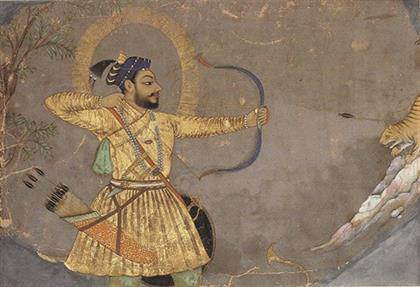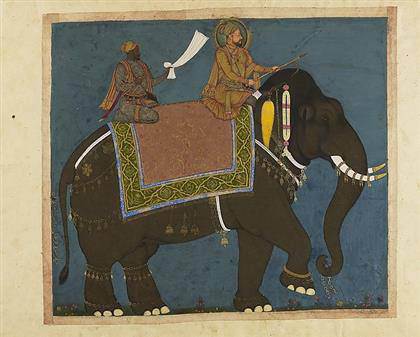
Attributed the Bombay painter (probably named Abdul Hamid Naqqash). Sultan ‘Ali ‘Adil Shah II Shooting an Arrow at a Tiger (detail). Bijapur, ca. 1660. Ink, opaque watercolor, gold and probably lapis lazuli pigment on paper. The Ashmolean Museum, Oxford. Lent by Howard Hodgkin.

Haidar ‘Ali and Ibrahim Khan. Sultan Muhammad ‘Adil Shah and Ikhlas Khan Riding an Elephant. The Ashmolean Museum, Oxford. Lent by Howard Hodgkin.
Art from Deccan India at the Metropolitan Museum ‘Sultans of Deccan India, 1500–1700: Opulence and Fantasy’ bring together some 200 of the finest works from major international, private, and royal collections. Metropolitan Museum of Art, New York, April 20 – July 26, 2015.]]>
Source: Metropolitan Museum of Art, New York
Featuring many remarkable loans from India, the exhibition —which is the most comprehensive museum presentation on this subject to date— explores the unmistakable character of classical Deccani art in various media: poetic lyricism in painting; lively creations in metalwork; and a distinguished tradition of textile production. A highlight is the presentation of all of the known masterpieces and several new discoveries in painting, the greatest art of the Deccan. Another highlight is the display of diamonds—some of the largest ever found—that originated in the great mines of the Deccan.
The golden age of Bijapur under the rule of Sultan Ibrahim Adil Shah II (1580–1627) defines the spirit of Deccani art. Masterpieces in painting by the leading court artist Farrukh Husain demonstrate the refined and lyrical style that influenced much of Deccani art. Ahmadnagar’s African nobility included the legendary Abyssinian Malik Ambar (1548–1628), whose portraits are included among other rare surviving works. Numerous examples of the celebrated bidri metalwork tradition from the kingdom of Bidar will also be shown. These feature a base composed of a blackened alloy of zinc and copper with thin sheets of silver inlay in striking designs.
From antiquity until the 18th and 19th centuries, when diamonds were discovered in Brazil and Africa, India was virtually the sole source for these precious gems. The extremely rich mines of Golconda produced some of the largest known diamonds. Whether given as diplomatic gifts or traded by merchants, India’s diamonds reached an appreciative audience among European royalty. The Deccan, already astonishingly wealthy, was further enriched by foreign demand for these gems. Among the treasures from Golconda —whose diamond mines were the source of such diamonds as the legendary Kohinoor— is a group of magnificent gems from international royal collections, including the “Idol’s Eye” and “Agra” diamonds.
The exhibition also includes spectacular large painted and printed textiles (kalamkaris), several over nine feet in height and all richly painted with motifs drawn from Indian, Islamic, and European art. These are shown along with sumptuous royal objects made of inlaid and gilded metal, precious jewels, carved wood, and stone architectural elements, many of which draw inspiration from the art of Safavid Persia and Ottoman Turkey.
Related content
Warriors and Mothers: Epic Mbembe Art at the Metropolitan Museum (exhibition, 2014-2015)
Follow us on:


